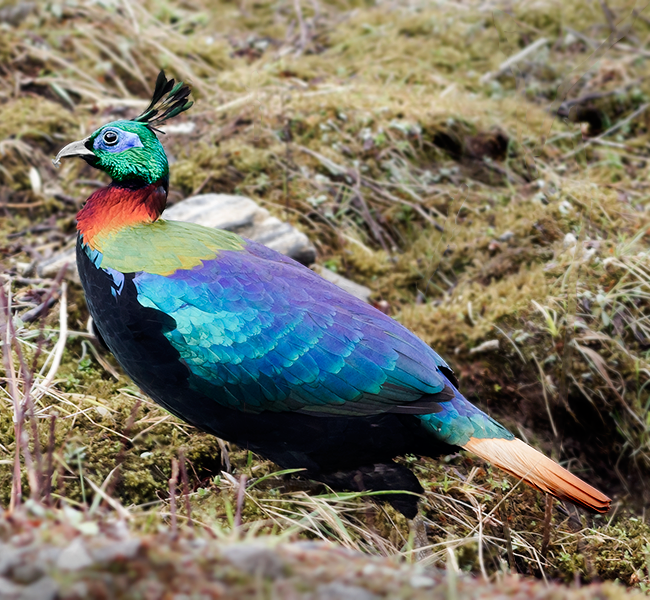
Himalayan Monal
Lophophorus impejanus
Order:
Family:
Size:
M 70-72 cm, F 63-64 cm
Weight:
M 1980-2380 g, 1800-2150 g
Taxonomy:
Monotypic Phasianus impejanus (Latham, 1790)
Short Description:
The Himalayan Monal (Lophophorus impejanus) is a majestic bird species found in the northern regions of Pakistan, including Gilgit-Baltistan and Azad Kashmir. Renowned for its vibrant plumage, the male Himalayan Monal boasts iridescent feathers of blue, green, purple, and copper, while the female exhibits more subdued brown and gray tones. These pheasants inhabit mountainous habitats, including alpine meadows and coniferous forests, where they forage for a variety of plant matter, seeds, and insects. During the breeding season, males perform elaborate courtship displays, including wing-fluttering and calls, to attract females. Himalayan Monals often form loose flocks, especially outside the breeding season, and are known for their stunning beauty, making them highly sought-after by birdwatchers and wildlife enthusiasts. However, they face threats such as habitat loss and hunting, highlighting the importance of conservation efforts to safeguard their populations in Pakistan.
Far far away, behind the word mountains, far from the countries Vokalia and Consonantia, there live the blind texts. Separated they live in Bookmarksgrove right at the coast
The Himalayan Monal (Lophophorus impejanus) is primarily distributed in the northern regions of Pakistan, including Gilgit-Baltistan and Azad Kashmir. These areas encompass the mountainous terrain of the Himalayas and the Karakoram Range, where the Himalayan Monal inhabits alpine meadows, coniferous forests, and other high-altitude habitats. While their distribution may vary within Pakistan, they are commonly found in these northern areas, where they roam amidst the rugged landscapes and dense vegetation. Conservation efforts are essential to protect their habitats and ensure their continued presence in Pakistan’s wilderness.
A little less wary than others of the genus. Digs extensively with bill, creating distinctive dug-over areas on hillsides. Species forages throughout day, sometimes in loose groups. Diet apparently varies according to locality, but includes seeds, tubers, shoots, berries, insects and their larvae; terrestrial insects and tubers make up most of food taken.
Far far away, behind the word mountains, far from the countries Vokalia and Consonantia, there live the blind texts. Separated they live in Bookmarksgrove right at the coast
About Photographer : Hello World
Facebook
Twitter
Instagram
Flicker
LinkedIn
